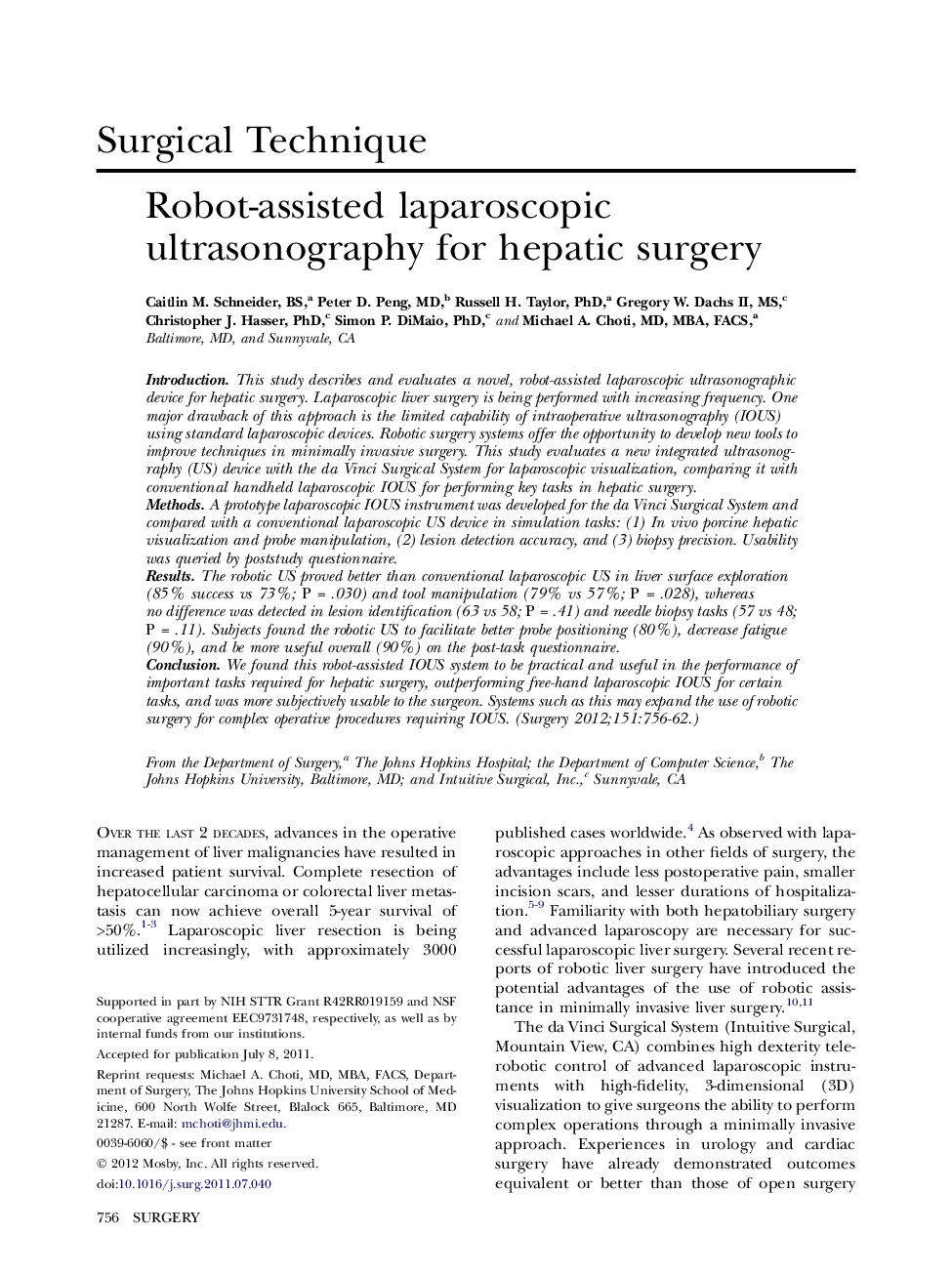| Article ID | Journal | Published Year | Pages | File Type |
|---|---|---|---|---|
| 4308469 | Surgery | 2012 | 7 Pages |
IntroductionThis study describes and evaluates a novel, robot-assisted laparoscopic ultrasonographic device for hepatic surgery. Laparoscopic liver surgery is being performed with increasing frequency. One major drawback of this approach is the limited capability of intraoperative ultrasonography (IOUS) using standard laparoscopic devices. Robotic surgery systems offer the opportunity to develop new tools to improve techniques in minimally invasive surgery. This study evaluates a new integrated ultrasonography (US) device with the da Vinci Surgical System for laparoscopic visualization, comparing it with conventional handheld laparoscopic IOUS for performing key tasks in hepatic surgery.MethodsA prototype laparoscopic IOUS instrument was developed for the da Vinci Surgical System and compared with a conventional laparoscopic US device in simulation tasks: (1) In vivo porcine hepatic visualization and probe manipulation, (2) lesion detection accuracy, and (3) biopsy precision. Usability was queried by poststudy questionnaire.ResultsThe robotic US proved better than conventional laparoscopic US in liver surface exploration (85% success vs 73%; P = .030) and tool manipulation (79% vs 57%; P = .028), whereas no difference was detected in lesion identification (63 vs 58; P = .41) and needle biopsy tasks (57 vs 48; P = .11). Subjects found the robotic US to facilitate better probe positioning (80%), decrease fatigue (90%), and be more useful overall (90%) on the post-task questionnaire.ConclusionWe found this robot-assisted IOUS system to be practical and useful in the performance of important tasks required for hepatic surgery, outperforming free-hand laparoscopic IOUS for certain tasks, and was more subjectively usable to the surgeon. Systems such as this may expand the use of robotic surgery for complex operative procedures requiring IOUS.
